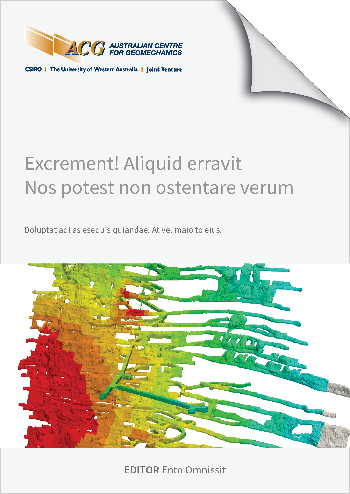Savage River underground project update

|
Authors: Wynn, E; Hancock, E |
DOI https://doi.org/10.36487/ACG_repo/2435_O-06
Cite As:
Wynn, E & Hancock, E 2024, 'Savage River underground project update', in Daniel Johansson & Håkan Schunnesson (eds), MassMin 2024: Proceedings of the International Conference & Exhibition on Mass Mining, Luleå University of Technology, Luleå, pp. 1309-1323, https://doi.org/10.36487/ACG_repo/2435_O-06
Abstract:
Grange Resources (Tasmania) Pty Ltd (Grange) operates the Savage River Mine, 100km southwest of Burnie, in Northwest Tasmania. The mine produces magnetite iron ore from a series of open pits and has been in operation for over fifty years. As at December 2023 the Mineral Resource Estimate is 472Mt at 44.4% DTR (Davis Tube Recovery). The magnetite ore is concentrated on site then transported by pipeline to the Port Latta Pellet Plant where high-grade pellets are produced for export to steel-making operations in the Asia-Pacific region (Grange Resources, 2024). A concept study in 2018 identified the potential for underground (UG) mining below the North Pit. A resource drilling program, Exploration Decline, Bulk Sample Drive and pre-feasibility study (PFS) were then completed in 2021. Following the PFS, Grange conducted an Enterprise Optimization Study which informed the optimal transition from open pit to underground. The Definitive Feasibility Study (DFS) for a single-panel block cave commenced in 2022 and was completed in 2023. The mineralised package is characterised by intense development of magnetite-rich lenses within a strongly deformed and metasomatised fault-bound package. Ground conditions are expected to be both favourable for caving and challenging for mine development. The Savage River Mine is also located in an area of high annual rainfall which further presents challenges for mine planning and the management of inrush or inundation hazards. This paper discusses the key outcomes of the DFS and the project evolution, including the caving strategy, mine design and materials handling system design, plans for automation, dewatering and ventilation strategies.
© Copyright 2025, Australian Centre for Geomechanics (ACG), The University of Western Australia. All rights reserved.
View copyright/legal information
Please direct any queries or error reports to repository-acg@uwa.edu.au
View copyright/legal information
Please direct any queries or error reports to repository-acg@uwa.edu.au